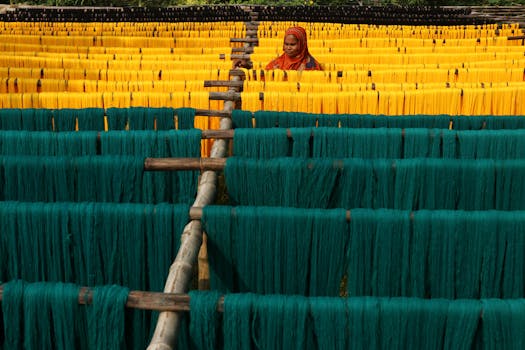Fiber Futures: Innovations and Trends in Africa’s Textile Industry

Fiber Futures: Innovations and Trends in Africa’s Textile Industry
Introduction to Fiber Futures and Africa’s Textile Industry
Fiber Futures: Innovations and Trends in Africa’s Textile Industry is a rapidly growing sector that has the potential to drive economic growth, create jobs, and improve living standards across the continent. The textile industry in Africa is a significant contributor to the region’s economy, with a rich history dating back centuries. From traditional crafts to modern manufacturing, the industry has evolved over time, shaped by technological advancements, trade agreements, and changing consumer demands.
The African textile industry is characterized by a diverse range of products, including cotton, wool, silk, and synthetic fibers. The industry is also marked by a mix of traditional and modern production methods, with many small-scale artisans and large-scale manufacturers operating alongside each other. Despite its potential, the industry faces numerous challenges, including limited access to finance, inadequate infrastructure, and intense competition from Asian manufacturers.
Current State of the Textile Industry in Africa
The textile industry in Africa is currently undergoing a significant transformation, driven by innovations and trends in fiber production, manufacturing, and trade. One of the key drivers of this transformation is the growth of cotton production in countries such as Egypt, Morocco, and South Africa. These countries have invested heavily in irrigation systems, fertilizers, and pest control measures, resulting in higher yields and better quality cotton.
Another trend shaping the industry is the increasing use of synthetic fibers, such as polyester and nylon. These fibers are widely used in the production of clothing, upholstery, and other textiles, and are popular due to their durability, ease of care, and affordability. However, the use of synthetic fibers has also raised concerns about environmental sustainability, as they are often made from non-renewable resources and can contribute to microplastic pollution.
Innovations and Trends in Africa’s Textile Industry
Several innovations and trends are driving the growth and development of the textile industry in Africa. One of the most significant trends is the adoption of digital printing technologies, which allow for faster and more flexible production of textiles. Digital printing has opened up new opportunities for small-scale designers and manufacturers, who can now produce high-quality textiles in small batches.
Another trend is the growth of sustainable and eco-friendly textiles, such as organic cotton, recycled polyester, and Tencel. These fibers are made from renewable resources, have a lower environmental impact, and are popular among consumers who prioritize sustainability. The use of sustainable fibers has also led to the development of new textile products, such as biodegradable fabrics and compostable clothing.
Future Prospects for Africa’s Textile Industry
The future prospects for Africa’s textile industry are bright, driven by a combination of factors, including government support, investment in infrastructure, and growing demand for African textiles. Many African governments have launched initiatives to support the textile industry, such as tax incentives, training programs, and trade agreements. These initiatives aim to promote the growth of the industry, increase exports, and create jobs.
Investment in infrastructure is also critical to the growth of the textile industry in Africa. This includes the development of roads, ports, and logistics facilities, which are essential for the transportation of raw materials and finished goods. The growth of e-commerce and digital platforms has also created new opportunities for African textile manufacturers to reach global markets and connect with customers directly.